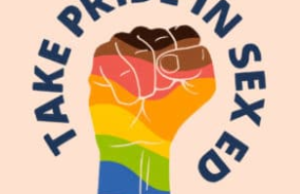PE curriculum fights type II diabetes

Diabetes isn’t something most of us have to worry about every day, but some day, that may all change.
In a recent study by the Centers for Disease Control, the findings were that one in every three babies born after the year 2000 will go on to develop type II diabetes. Clearly, the trend for all Americans over the last few decades has also been an unhealthy rise in body masses and increasingly sedentary lifestyles.
Both of these are high risks for developing type II diabetes, but CFHS PE teachers are developing a plan for making sure students avoid becoming unfortunate statistics.
There are two types of diabetes. Type I diabetes is a life-long condition in which the pancreas stops making insulin. The body is not able to use sugar for energy. Unfortunately, type I diabetes cannot be cured.
Type II diabetes is when the pancreas does not produce enough insulin to meet the body’s needs or the insulin is not metabolized effectively. If caught early, this type of diabetes can be cured with diet and exercise.
The signs that someone has diabetes are constant thirst, eating a lot and still losing weight and constant bathroom breaks.
In 1992, it was fairly rare for pediatric centers to even have a patient with type II diabetes, but by 1994, the amount of patients rose about 16 percent, and by 1999, it rose 45 percent.
“I’ve noticed about a 25 percent increase of patients since 2002,” Endocrinologist Chitra Mallavarapu, who practices here in the Cedar Valley, said. She has noted this 25 percent increase particularly in those who are obese and range from ages 20-30. According to Mallavarapu, most of the patients she saw in 2002 and earlier ranged from ages 50-60. Most of those people were diagnosed with type II diabetes.
The major complications with having diabetes are bad eyesight, failing kidneys, heart attacks and strokes. Theses symptoms can be greatly lessoned with a healthy diet and exercise.
“Type II diabetes is growing along with obesity. We need to do something about it before it gets out of hand,” Mallavarapu said.
And the changes in the CFHS PE programs will directly affect this need. Cedar Falls High School is receiving a 25-piece cardio room, an ergometer, six new weight platforms, two functional trainers, various weights, kettle balls, a class set of dumbbells, mats, jump ropes, various replacement equipment for units, an iPod with speakers, E600 Heart Rate Monitors, and all of the software Pocket PC’s and laptops for data collection and software purposes in the first year of a $1 million grant that was awarded last summer.
Near the second and third year, Dance Dance Revolution, replacement equipment, polar TriFit machines, DineHealthy and TredWall equipment will also be provided.
With all this new equipment, students struggling with weight or diabetes will have a better chance to become healthy.
“The equipment we are receiving will allow us to teach students how their bodies work and how to exercise so that when they graduate from CFHS they will be self-motivated and knowledgeable about how to achieve their fitness goals and desired wellness level,” PE teacher Jamie Smith said.
According to Smith, though new machines and technology don’t necessarily mean students will get healthy faster, it is more likely that they will be more motivated to do their best thanks to help from peers as well as health instructors.
“Students will be in their target heart rate zone for at least 30 minutes every day. In addition, they will be learning training principles and basic nutrition and applying all of these concepts daily,” Smith said.
This plan should greatly assist students who have type II diabetes. The best thing to do for students who have it is to learn as much as possible about it. When it comes to food, one of the best things to do is to count carbs and calories. The nutrition unit offered in CFHS health classes may help those who want/need to eat better.
Either way one looks at it, Americans are growing bigger and need to do something about it before it gets out of hand. The PE teachers are already collecting extensive data to see if their new curriculum and grant is making an impact on not only type II diabetes, but also the overall health of students as they learn to eat right, get at least 30 minutes of exercise a day and make measurable plans to reduce the risk of becoming obese and getting type II diabetes.








You must be logged in to post a comment Login